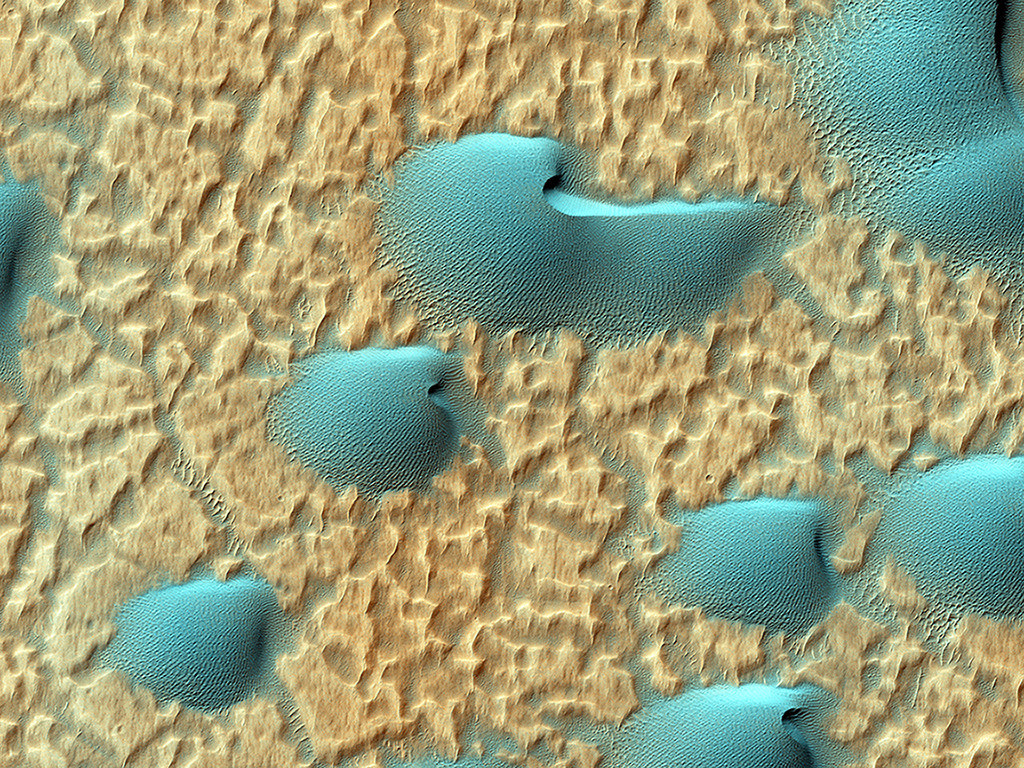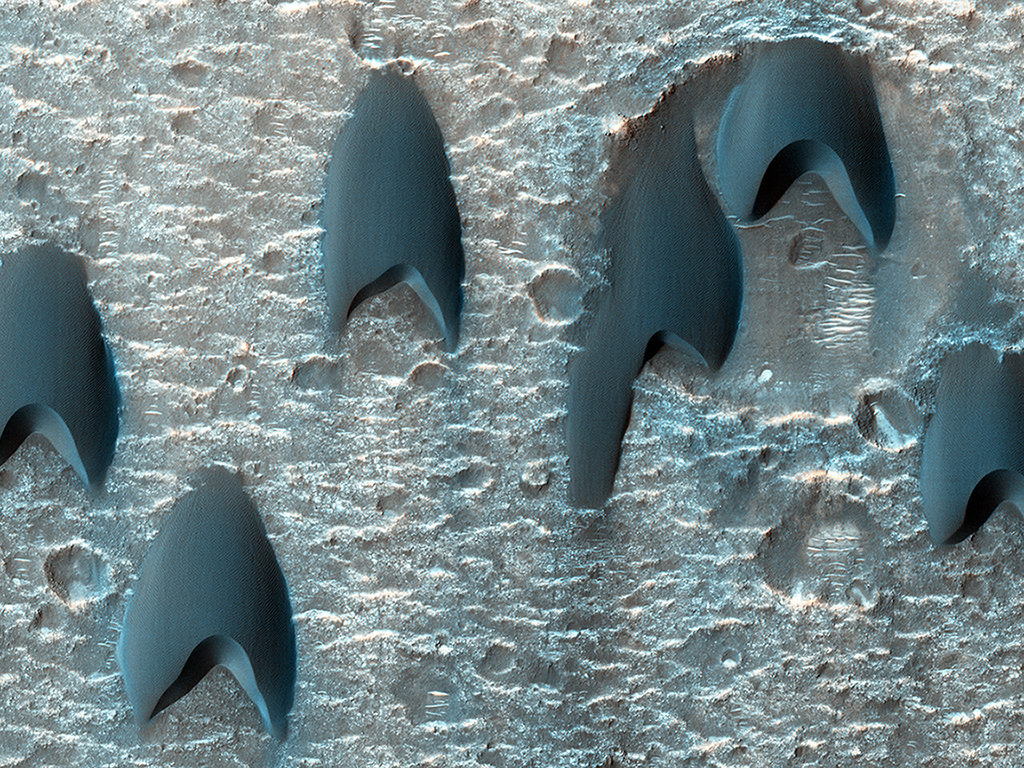TORONTO – They are colourful, dynamic portraits that could hang in a art museum. But instead of paint on a canvas, these landscapes have been created by time and the laws of nature and the forces that guide our universe.

Thanks to a camera aboard NASA’s Mars Reconnaissance Orbiter (MRO) called the High Resolution Imaging Science Experiment (HiRISE), we are seeing Mars not as the barren, rock-strewn, red planet we have come to know, but rather a body in our solar system that is dynamic and rich with beauty.
HiRISE operates in visible wavelengths, but also has the ability to photograph in infrared light, allowing scientists to collect data on minerals on the planet, teaching them about the planet’s complicated and still unknown geology.
What is more spectacular is that HiRISE produces extremely high-resolution images. Using its visible light camera, it can distinguish objects that are just one metre in diameter from an altitude of about 200 to 400 kilometres.
The MRO was launched on August 12, 2005 and arrived on Mars March 10, 2006. Since then, its numerous scientific instruments continue to operate and collect data about Mars.
The orbiter’s mission is to study the history of water on the planet, as well as small-scale features.
Incredibly, the high-resolution also spotted the tracks of the Mars rover Curiosity as it trekked across Mars.
In 2007, HiRISE also provided a spectacular image of our home.
The mission is still going strong. And while the scientists collect data and help to expand our knowledge about the formation of other planets in our solar system, we reap the benefits with their breathtaking portraits.












Comments